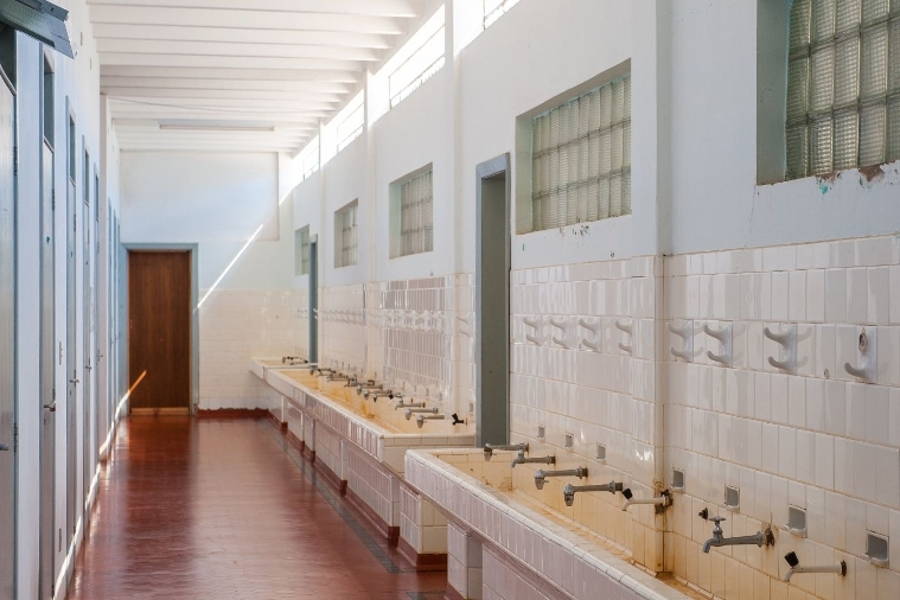NAVIGATING BATHROOM POLICIES: SAFETY AND SENSITIVITY IN WORCESTER COUNTY SCHOOLS

There's a trend in education now that's causing quite a stir in the Worcester County Public Schools. At the bustling intersection of privacy, safety, and inclusion, the issue of bathroom policies for transgender and gender-nonconforming students has captured the attention of our Worcester County School community, mainly Stephen Decatur High School.
The essential question we face is both contentious and profoundly significant: Should schools allow individuals of the opposite sex to use bathrooms corresponding to their gender identity, not their biological sex?
Given that this is a sensitive matter for many, parents in Worcester County have expressed their concern to Eastern Shore Undercover, with the hopes of getting a resolution, or at least making the public aware, and making all parties feel safe and secure while using school bathrooms.
Respect for all individuals is a core human value yet this must be balanced against the equally important values of privacy and safety, particularly in the restrictive confines of a school environment.
A Parent's Query: Why Are Males in the Females' Bathroom?
Let's start with the prompt that sparked the inquiry. Several parents from Stephen Decatur High School, who are concerned about the well-being of students, broached a scenario that had them questioning the collective policy: male students being allowed to use the female bathroom.
In a message that was provided to Eastern Shore Undercover, one student sent her mother a text message stating that there was a male with make-up on, in the women's bathroom to which the mother advised her to tell the male to get out of the women's bathroom. The student replied that she was in fear of being assaulted if she said anything, and subsequently made the decision to refrain from saying anything or using the bathroom at that time.
The incident led to a broader conversation about transgender and gender non-conforming students and their rights to safety and accommodation in the school setting. The weight of ensuring that no student is left vulnerable or excluded is significant.
But is it at the cost of others' perceptions of their safety and privacy? Is it fair for female students of the school, to be inconvenienced and made to feel unsafe, due to a very small minority of the student body, who are transgender or gender non-conforming?
Transgender Rights and a School's Responsibility
To address the parental concern and the underlying issue it reflects, it is essential to recognize the legal and social frameworks that guide our decisions. Title IX of the Education Amendments of 1972 prohibits sexual discrimination, which has been extended to include gender identity. Schools are at the forefront of implementing policies that respect and protect these rights.
For transgender and gender non-conforming students, something as simple as using the restroom can be a daily challenge. Denying them access to facilities that align with their gender identity not only isolates them but can also lead to psychological and emotional distress. But again, is it fair for students of the opposite sex, to be made to feel unsafe and insecure, and create a challenge for them on a daily basis when using the bathroom that is dedicated to their own biological gender?
Privacy and Safety: The Other Side of the Coin
While the safety and dignity of transgender and non-binary students are of certain importance, the privacy and comfort of the wider student body should also be non-negotiable. An alarming aspect of the bathroom dilemma is the potential for abuse by individuals who might exploit lenient policies at the expense of others. The fear of such instances can create an environment marked by tension and agitated vigilance instead of healthy educational pursuits.
Safety measures, such as increased surveillance and the employment of gender-neutral facilities, need to be considered to assuage the concerns of the broader community. These allow for an environment of inclusivity without disregarding the needs of any student when it comes to privacy and security.
A Call to Community Involvement
As a member of the community, your voice matters. The implementation and review of such policies should be a collaborative process, involving community members and leaders in the discussion. It is through these united efforts that we can strike the balance between the protection of privacy and the promotion of equality.
While there is no one-size-fits-all solution, there needs to be steps made as a community to hopefully resolve these issues and concerns.
But what are those solutions and how do we get them done? We stand at a crossroads where our decisions as a community will reflect our commitment to a better, more inclusive future, nurturing our students as they navigate their path through adolescence and beyond.


_1754575213489_1.jpg)